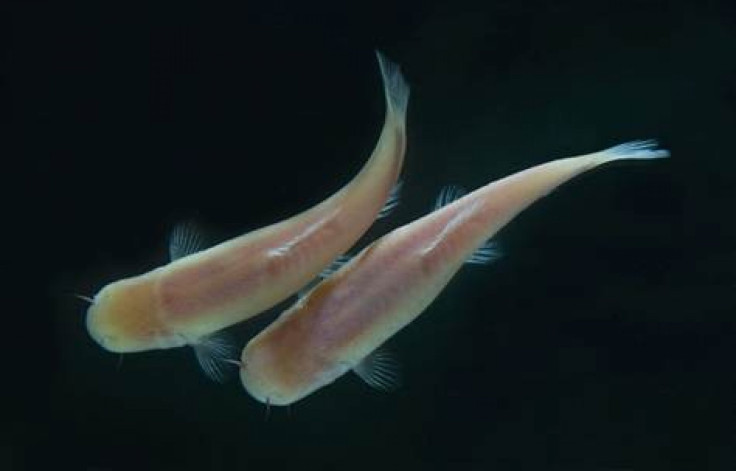Blind Cave Fish May Shed Light on Human Body Clocks

Blind cave fish have spent millions of years in the dark underground with no concept of day and night, yet scientists have found that they still maintain a working biological clock.
Researchers say that learning more about how these eyeless fish operate could yield new clues on how our own body clocks work.
The Somalian cave fish, Phreatichthys andruzzii, has an inner timekeeper that ticks on a roughly 47-hour cycle determined by food rather than sunlight. This is the intriguing find from an international team of scientists from Italy, Germany, and Spain that was published online September 6 in PLoS Biology.
The researchers hope that their finds will teach scientists more about the molecular pathways that govern such clocks, why they are important to organisms, and how creatures adapt when their clocks are no longer tied to cycles set by sunrise and sunset.
Most living things - animals, plants, some kinds of bacteria - follow the sun to set their daily clocks. Our internal clocks, known as circadian rhythms, govern our sleep patterns, feeding times, rise and fall of blood pressure, and other daily activities. While this clock generally operates on a 24-hour cycle, it is highly adjustable to the natural world, resetting on a daily basis by signals such as daylight to keep synchronized.
Nearly 50 species of fish worldwide have evolved to live without sunlight in caves. Many of these species have evolved into eyeless creatures.
Cave fish give us a unique opportunity to understand how profoundly sunlight has influenced our evolution, researcher Cristiano Bertolucci, a chronobiologist at the University of Ferrara in Italy, told LiveScience.
Bertolucci and his colleagues compared the swimming behavior and clock-gene activity of the Somalian cave fish, which has lived up to 2.6 million years beneath the desert, with the relatively normal and closely related zebra fish.
Zebra fish run on a circadian clock, synchronizing with cycles of light and dark. As expected, the blind cave fish did not keep in sync with light and dark. However, when a different signal (feeding time) was used, both the zebra fish and cave fished matched, proving that cave fish clocks could work if given a relevant signal like food.
Researchers then gave the cave fish a chemical known to activate clock genes in normal fish. Surprisingly, the blind fish's circadian rhythms began moving on a bizarre 47-hour cycle.
While the cave fish can no longer operate on a 24-hour cycle, the test showed that the core components of the fish's biological clock remained functioning.
We're watching a cock in the process of being broken, study author Nicholas S. Foulkes, of Karlsruhe Institute of Technology in Germany, told ScienceNews.
Foulkes added that in another million years or so, the cave fish may lose other important clock parts as well.
In another experiment, the team found that raising the temperature in the lab sped up the cave fish clock, while lowering the temperature slowed it down. This is also unusual, as most organisms' circadian clocks remain insulated from temperature change.
The findings confirm that the cave fish clock is still ticking, even though it can no longer be set by light. In contrast, zebra fish clocks respond to both light and food.
This study sets the stage for a more complete understanding of how clocks respond to their environment, Foulkes said in the study.
For humans, there is great interest in the recent finding that light's effects on the circadian clock are mediated by non-visual pathways in the brain. Also, because the human circadian system is known to be important in health and illness (especially mental health), understanding our body clocks better can help address a core vulnerability in our own circadian system.
The full details of the study can be found in the online journal PLos Biology.
© Copyright IBTimes 2024. All rights reserved.












